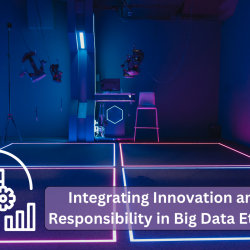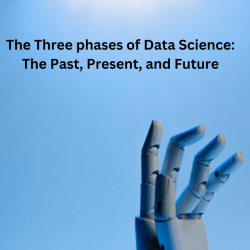Radiology and Artificial Intelligence Key Findings from Market Research Explaining Industry Evolution

Introduction to Radiology and Artificial Intelligence
Welcome to the world of radiology and artificial intelligence! This dynamic duo has been making waves in the medical industry, transforming the way we approach diagnosis and treatment. In this blog section, we will dive into the key concepts surrounding the relationship between radiology and artificial intelligence, exploring the latest market research findings and discussing the factors driving their growth.
Firstly, let’s define our key terms. Radiology is a branch of medicine that utilizes medical imaging techniques such as X Rays, CT scans, and MRIs to diagnose and treat diseases. On the other hand, artificial intelligence (AI) refers to computer systems that can perform tasks that typically require human intelligence. So what is the connection between these two seemingly different industries?
The rise of AI in radiology can be attributed to advancements in technology and machine learning algorithms. These have allowed for more accurate and efficient analysis of medical images, leading to faster diagnoses and improved patient outcomes. In fact, according to market research by Grand View Research, the global AI in radiology market is expected to reach $9.4 billion USD by 2027.
Background of Radiology and Artificial Intelligence
Radiology and Artificial Intelligence: Exploring the Evolution and Impact of These Two Fields
Radiology, a branch of medicine that uses medical imaging to diagnose and treat diseases, has come a long way since its inception in the late 19th century. From X Rays to CT scans to MRIs, radiology has become an essential tool for doctors worldwide, helping them to make accurate diagnoses and provide effective treatments for their patients. However, with the advent of technology and its rapid advancement, a new player has entered the field of radiology – Artificial Intelligence (AI). In this blog section, we will delve into the history of radiology and its evolution into a key medical imaging tool. We will also discuss the introduction of AI in radiology and its potential impact on diagnostic accuracy and efficiency, along with market research findings on the growing adoption of AI technology in this field.
History of Radiology: From X Rays to Cutting Edge Imaging Techniques
It all began in 1895 when Wilhelm Conrad Roentgen discovered X Rays by accident while experimenting with cathode rays. This discovery revolutionized medicine as it allowed doctors to see inside the human body without performing surgery. Over time, various advancements were made in radiology, such as the development of fluoroscopy by Thomas Edison in 1896 and CT scanning by Godfrey Hounsfield in 1972. These innovations paved the way for more sophisticated imaging techniques like MRI (magnetic resonance imaging) and PET (positron emission tomography), which are widely used today.
Market Research Methodology
Market research is the process of gathering, analyzing, and interpreting data about a specific target market or industry. In the context of radiology and artificial intelligence, it involves studying key players, consumer behavior, and technological developments to better understand the current state of the market.
In recent years, we have witnessed a significant evolution in market research methodologies due to rapid advancements in technology. Traditional methods like surveys and focus groups are still relevant but have been complemented by more advanced techniques such as big data analytics and predictive modeling.
Why is it important for companies operating in the radiology and artificial intelligence sector to understand key findings from market research? The answer is simple: to stay ahead of the competition. In an industry that is constantly evolving with new innovations emerging almost every day, having a clear understanding of what customers want and how the market is changing can give companies a competitive edge.
Key Findings on the Integration of AI in Radiology
To begin with, let us take a look at the current state of AI integration in radiology. Market research studies have shown that AI is gaining traction in this field, with an expected market size of over $2 billion by 2027 (Source: MarketsandMarkets). This growth can be attributed to the numerous benefits that AI brings to radiology, including increased efficiency, accuracy, and cost effectiveness.
One of the key findings from market research is that AI is being integrated into various aspects of radiology, including image analysis, workflow optimization, decision support systems, and predictive analytics. These advancements have been made possible due to the development of deep learning algorithms that can accurately detect abnormalities in medical images.
Another interesting finding is that AI-powered diagnostic tools are already being used in clinical practice. For example, some hospitals are using algorithms to assist radiologists in detecting lung nodules on chest CT scans.
Impacts of AI on Traditional Radiology Practices
According to a recent report by Grand View Research, Inc., the global market size for AI in healthcare was valued at USD 1.3 billion in 2018 and is expected to reach USD 28.0 billion by 2026. This rapid growth can be attributed to the integration of AI technology in various aspects of radiology, such as image analysis, diagnosis, and treatment planning.
With advancements in deep learning algorithms and machine learning techniques, AI has become more efficient in recognizing patterns and abnormalities in medical images. This has led to improved accuracy and efficiency in diagnosing diseases such as cancer, stroke, and neurological disorders.
Moreover, AI technology has also streamlined workflow processes within radiology practices. With the help of automation and intelligent software systems, routine tasks like data entry and image sorting can now be done quickly and accurately.
Advancements in Imaging Technology Due to AI Integration
Recent advancements in imaging technology have been greatly influenced by AI integration. This collaboration between technology and medicine has led to improvements in diagnostic accuracy and efficiency, ultimately benefiting patients. Let’s take a closer look at the key points surrounding this topic.
One of the most significant impacts of AI on radiology is its ability to enhance diagnostic accuracy. With AI algorithms integrated into imaging software, radiologists can receive real time analysis and interpretation of images. This not only speeds up the diagnosis process but also reduces human error and variability in image reading.
Furthermore, AI has been proven to detect subtle abnormalities or patterns that may be missed by the human eye. In some cases, these subtle changes can be early indicators of disease or medical conditions that may go undetected during manual image interpretation. With AI technology aiding in image analysis, healthcare professionals are able to catch these abnormalities earlier on, resulting in early intervention and improved patient outcomes.
Challenges and Limitations of Implementing AI in Radiology
According to market research, the implementation of AI in radiology is still in its early stages with limited adoption by healthcare facilities. This is mainly due to the fact that AI technology is constantly evolving and there is still a lack of understanding about its capabilities and limitations. As a result, many healthcare providers are cautious about fully integrating AI into their workflows.
One of the main challenges faced in implementing AI in radiology is the need for large amounts of data to train AI algorithms. This means that healthcare facilities must have access to vast amounts of high quality data from different sources to develop effective AI systems. However, obtaining this data can be difficult as it often comes from various health information systems, which may not always be compatible with each other.
Moreover, there are concerns regarding data privacy and security when using patient data for training AI algorithms. Medical professionals are responsible for ensuring patient confidentiality and abiding by regulations such as HIPAA (Health Insurance Portability and Accountability Act). With AI technology, there is a risk of sensitive patient information being accessed or compromised, leading to legal ramifications for healthcare providers.
The Growing Role Of Artificial Intelligence In Revolutionizing The Field Of Radiology
The medical field has seen incredible advancements over the years, with technology playing a crucial role in improving healthcare outcomes. One such technological innovation is Artificial Intelligence (AI), which has begun to revolutionize the field of radiology. AI, also known as machine learning, involves using computer algorithms to analyze data and make predictions or decisions.
According to market research, the demand for AIbased solutions in healthcare is rapidly increasing. This trend is no different in the field of radiology, with a growing number of healthcare providers seeking these advanced systems. The key reason behind this surge in demand is due to its ability to improve diagnostic accuracy and efficiency.
The integration of AI into radiology has led to significant improvements in image analysis and interpretation. For example, AI algorithms can detect minute differences between healthy tissues and abnormalities that may not be visible to the human eye. This early detection can help identify potential issues before they become serious health concerns for patients.
Check out:
Data Science Colleges In Mumbai






Ingen kommentarer endnu